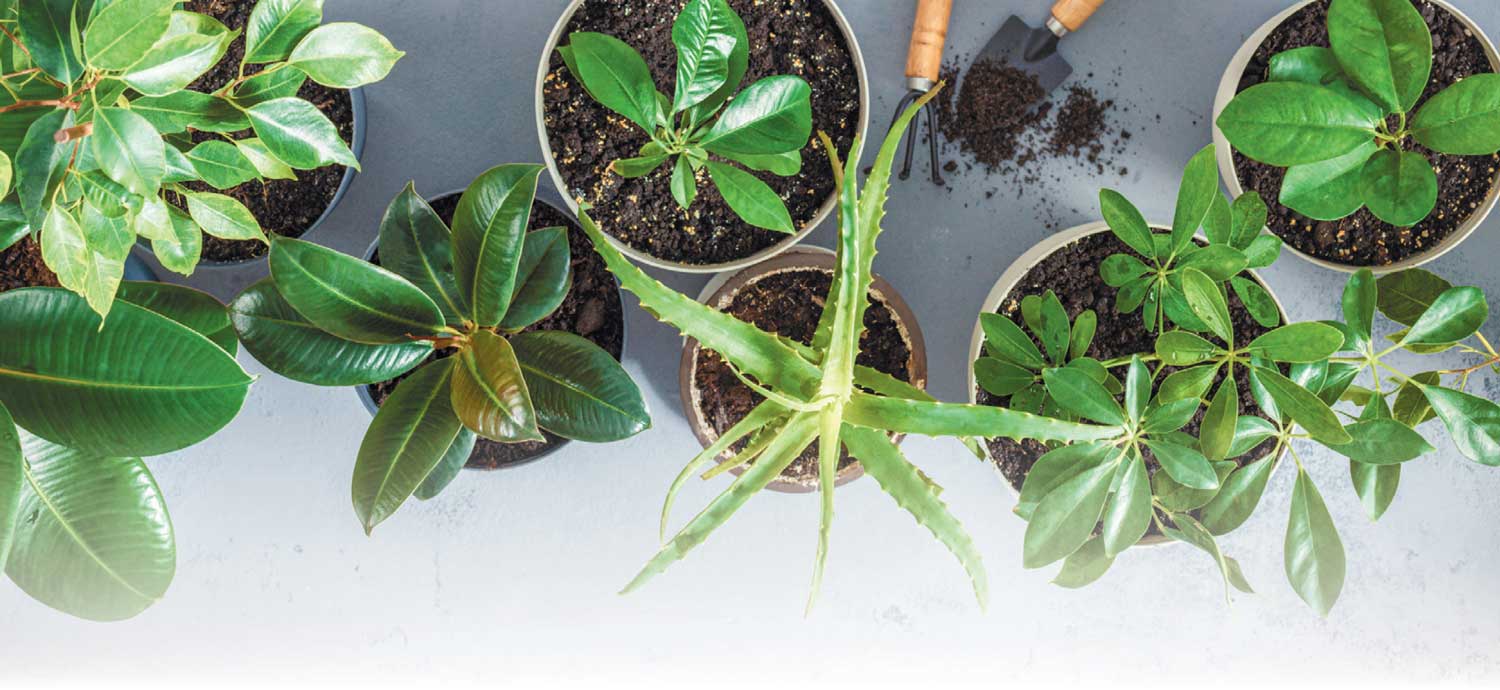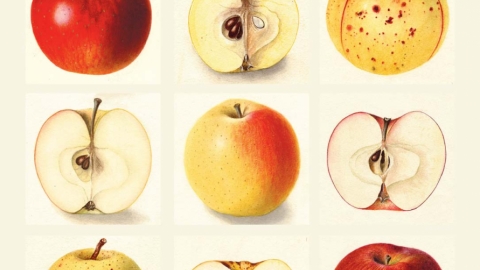Nurturing and Caring for Houseplants
In the mid ’70s, my family moved halfway across the country to New Jersey. After the movers loaded up most of our stuff, all eight of us piled into the station wagon along with all our pets. A dog, a snake, and a jade plant.
OK, a jade plant is not really a pet—but maybe it was. It was December 1975, and the moving truck was unheated. Most of my mom’s plants were in the truck, covered with moving blankets, and the movers assured her that the plants would make it; it was just a one-night trip. Mom had her doubts and would have preferred to put all her plants in the car, but that would have meant transferring a few of us six kids to ride in the truck. I volunteered but alas, it’s illegal. Her plants died in the back of that cold truck.
Settled into our new home in Morristown, with huge windows in front and back, Mom hung houseplants in macrame hangers made by servants (aka: us kids) across the windows from fat curtain rods. Some of the elaborate hangers held a single pot, some two, and I’m sure there was a triple. (One of us was showing off. It was a jungle.)
That jade plant (Crassula ovata) is huge now, taking up a good portion of my sister’s dining room, and Mom still has a big cutting from it, as do I. I love the idea that it is the same plant that was in our house in Illinois when I was a baby, and that we all continue to enjoy its off spring.
That’s what is great about houseplants. If all goes well, they live long and come to hold a place in one’s personal history. A lot of my houseplants were gifted to me—some by my sisters, some by my friends, never by my brother. Hmmm.
After telling a friend and plant curator my tale of losing (killing) a large Christmas cactus (Schlumbergera x buckleyi) that my mother-in-law gave me, she gave me a very small one that has grown big enough to bloom. We rescued a silver jade (Crassula arborescens) from our daughter’s college apartment as, evidently, college kids don’t know plants need water.
Another sister, a nurse, gave me a ZZ plant (Zamioculcas zamiifolia) for its health benefits. It’s a great air cleaner, removing harmful chemicals such as formaldehyde from the air. I keep it in my home office. I like it because it is resilient, perfect for a forgetful owner, surviving for weeks if I forget to water it. I got my spider plant from my oldest sister, given in a giant strawberry pot for a birthday.
I’m more of an outside-plant person, but when I met my husband, Max, he had plastic gallon milk bottles in his room, full of water. He did not like to water his houseplants with tap water; he wanted to let the water off-gas for a few days before using it. Max has upgraded over the years, and now uses blue wine bottles to off-gas and store his H2O. There are three blue bottles on my kitchen windowsill right now. My research says that there is not enough chlorine in our drinking water to harm most plants, but he persists.

HOUSEPLANTS ARE HAVING A MOMENT NOW, AND FOR GOOD REASON.
Max is nurturing an ugly cactus we have had since we’ve been married, assorted succulents, my jade, and a few different aloe. After 20 years of moving his lemon tree out in spring and back inside in the fall, he lost it, cause unknown. The same thing happened to his favorite coffee tree. We sometimes forget to bring the plants that summer outside, back inside, before an early frost. That’s a sure way to kill a houseplant. Mostly, though, houseplants are easy.
Houseplants are having a moment now, and for good reason. But unlike most trends, I believe this one will last, because of the growing body of research showing that plants can improve our health and well-being. Houseplants are known to reduce stress just by having them around. Nurturing and enjoying them can help you recover from illness faster, boost your productivity, and improve indoor air quality. I like them because they are beautiful, something we all could use more of in our lives. And houseplants are the gateway drug to a bigger addiction: outdoor gardening.
Getting started is easy. Start small. Think of plants as solar-powered sugar mills, so place them as close to a window as possible. A ZZ plant may be the easiest to care for; with shiny leaves on tall stems, it is very forgiving when you forget to water it. For a low-light area, choose a snake plant (Dracaena trifasciata). A native to West Africa, they store water in their leaves, so they are nearly indestructible. A spider plant (Chlorophytum comosum) may be the best air purifier. Its wide grass-like leaves are lush looking and they produce babies, making them easy to multiply and share. For a gift, try a money tree (Guiana chestnut). While it might not grow money, it is a symbol of good luck and prosperity.
Succulents are the all-time easiest plants to care for, and there are so many different ones. They are easy because they grow naturally in warm dry climates. This means they don’t need much watering. If you have kids or pets, do a little research to find plants that are not dangerous if eaten.
Here are a few basics to keep in mind when caring for houseplants:
- Water houseplants when the top inch of soil is dry. Usually once a week. Less in winter.
- When the light starts to increase, watch for new growth. The plant will now need more water.
- Small pots dry out faster than large ones.
- Water until you see it coming out the drainage hole. If you forgot to water and you see the soil has shrunk and moved away from the container, submerge the pot in a bowl in the sink until the soil hydrates and expands.
- Use room-temperature water.
On my windowsill, I see not only plants, but also connections to so many friends and family, and the past. The jade plant is now family lore. My daughter and her cousins all know the story of that plant having a seat in the station wagon, its shiny leaves connecting us to our Midwestern roots. I am happy to keep the tradition going. As long as I don’t overwater….
READING RECOMMENDATIONS
Here are my favorite books for houseplant enthusiasts:
House-Plant Family,
by Darryl Cheng (Harry N. Abrams; 2019). Covering the basics to more in-depth information, with great illustrations and photos.
The Indestructible Houseplant: 200 Beautiful Plants that Everyone Can Grow,
by Tovah Martin (Timber Press, 2015). This book covers an impressive array of plants and helps you select the right plant for your situation.
How Not to Kill Your Houseplant: Survival Tips for the Horticulturally Challenged,
by Veronica Peerless (DK, 2017). A fun and easy-to-use guide for beginners.










